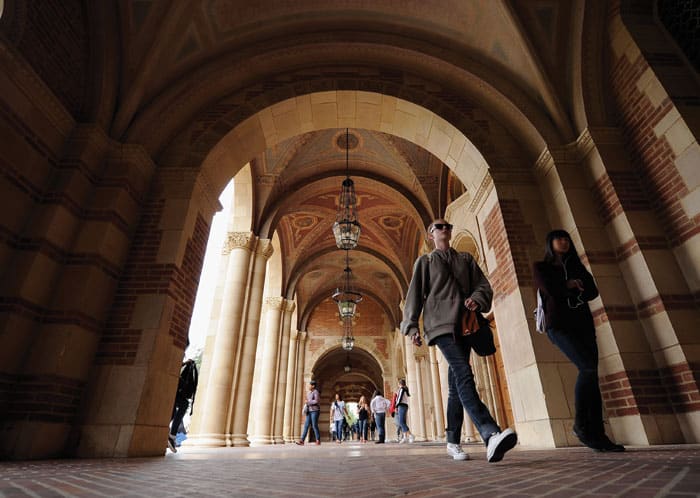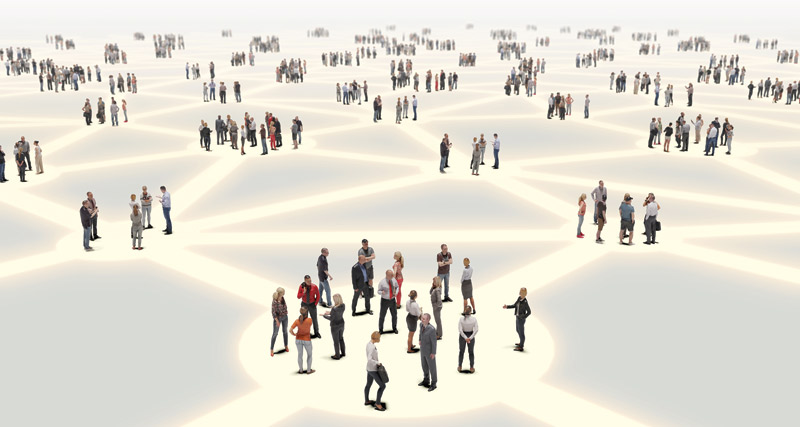"The New Geography: How the Digital Revolution Is Reshaping the American Landscape," by Joel Kotkin. (Random House, $22.95)
Joel Kotkin, a senior fellow at both Pepperdine University Institute for Public Policy and Milken Institute and a research fellow at the libertarian Reason Public Policy Institute, for 20 years has been researching and writing about what he terms "intangible" inputs into economic life.
His previous book, "Tribes: How Race, Religion and Identity Determine Success in the New Global Economy," studied cultural factors that, for example, gave Jews and expatriate Chinese communities tools for their historical economic successes.
Likewise, he argued that Southeast Asians and Koreans, among others, benefit from a variety of culturally based strategies that enable them to negotiate the shoals of a fast-paced, chaotic and demanding business environment.
In "The New Geography," Kotkin, an occasional Journal contributor, brings a similar analytic approach to the impact of the digitized economy on our physical environments. Forgoing jargon, except for the symbolic language he creates to explain some of the more overt effects of the great economic transition we have witnessed in the past 10 years or so, Kotkin writes an extremely accessible book that explores the choices and consequences of where and how we choose to live and work.
Three homemade neologisms act as his introduction to our new geography: valhalla, nerdistan and midopolis. The cutesy names belie a serious argument: that each of the three types of places, representing different tracks and classes in the new e-economy, express the different interests and capacities of their inhabitants.
One of the historic privileges of great wealth was to gain physical distance from the masses. That distance historically was constrained by practical necessity: the need to oversee in person one’s business interests, the limitations of communication, the time needed for one to travel, and one’s own need to have goods and services in somewhat close proximity. As both communication and travel have become faster, more efficient and increasingly inexpensive, the entrepreneurs of the new e-economy can locate themselves far away.
Vail in Colorado, Park City in Utah, and any number of other places are these valhallas. The locations play no part in the economic lives of their new residents, however, and the flow of wealth into such areas often leads to a serious disruption in the lives of others who live and work there. "They may be breathtakingly beautiful as places, but they are no longer rustic in the nature of their economy or, increasingly, in their population," writes Kotkin. "As Ed Marston, editor of the Rocky Mountain News, suggests, ‘What is Montana without cowboys? Once you get rid of agriculture, you’re left with nothingness. You’re not using the land. It just becomes ‘looking country.’"
Not everyone can be a wildly successful entrepreneur, and the management and technological sectors of the new economy need their physical places also. One group gravitates toward Kotkin’s so-called nerdistans: these master-planned communities feature "a more ‘campus-like’ environment, often with landscaped walkways and access to bikeways and other recreations." These are idealized communities for raising families; refurbished suburban dreams catering to the concerns of scientists, engineers and technocrats in the e-economy.
Parallel to that are the urban pioneers, the artists, artisans and generally creative types who flock into Kotkin’s "artful city," working in a more informal manner, seeking the inspiration and excitement of a revitalized urban life.
True to his long roots in Southern California, Kotkin uses local geography to illustrate his point. Irvine is a nerdistan; Santa Monica, the hip, urban "artful city."
Often those in the latter are the childless, gay, empty-nesters, divorced or never-married. In some ways, one can imagine the Getty Center as a nerdistan/artful city monument. Its design is certainly campus-like; its contents, well, arty.
The midopolises are more problematic. Typically, as the suburbs recycle and grow denser and grittier, they devolve into slums. But the great influx of immigrants, with their verve, determination, hard work and overall economic and social energy, help resist the natural history of the housing stock. As soon as they can afford it, they settle away from the inner city and into the suburban landscape, where they reshape traditional suburbia in surprising ways.
The San Gabriel Valley is in sections overwhelmingly Asian, with an elaborate and sophisticated Asian cultural and economic infrastructure, while previously "lily-white" suburbs have often become predominantly Latino. Both populations are driven to thrive in an economically beneficent environment relative to their respective homelands.
Nonetheless, the midopolises as often as not rely on the old economic mode — light manufacturing, retailing, import-export firms — rather than the new one, which has the potential of seriously limiting these groups’ progress up the economic ladder.
Kotkin points to a potential real-estate crisis. As retail sales move more to the Internet, the vast retailing physical structure will be threatened. For massive big-box stores, a 6 percent loss in sales to the Internet could translate into a 50 percent loss in profitability. Just as traditional downtown shopping areas died in the wake of regional malls, so too regional malls can suffer seriously over the long run when exposed to e-commerce.
As he explores the implications of the class stratification growing out of the digital revolution, Kotkin uses a wide range of historic analogies: Rome, Greece, Venice, Amsterdam, London. In doing so, he traces the arc of urban life, examining the relevance to our situation of the growth of artisans, the rise of factories, the inevitable development of conflict along class lines in highly stratified cities. He fears that those conflicts could grow here: the educated, online, plugged-in will so far economically surpass the under-educated and off-line that the valhallas and nerdistans will become in all essentials separated from the midopolises and city centers.
His hope is that we realize we live not only in virtual reality, but in a physical reality of place; that the intersection of real, lived human lives determines both economic and community success. "The oldest fundamentals of place — sense of community, identity, history and faith — not only remain important, they are increasingly the critical determinants of success and failure," he maintains. As always, Kotkin remains both open-eyed and optimistic.






















 More news and opinions than at a Shabbat dinner, right in your inbox.
More news and opinions than at a Shabbat dinner, right in your inbox.